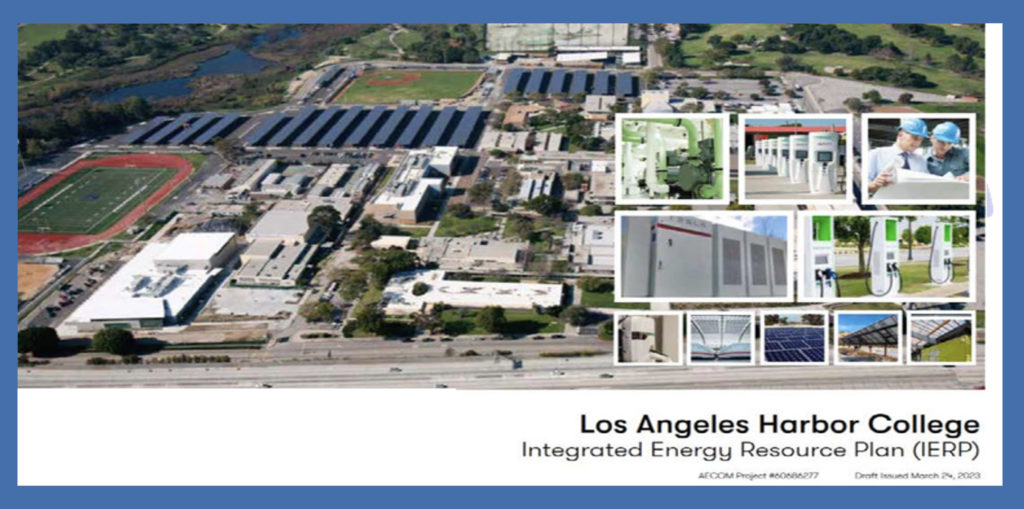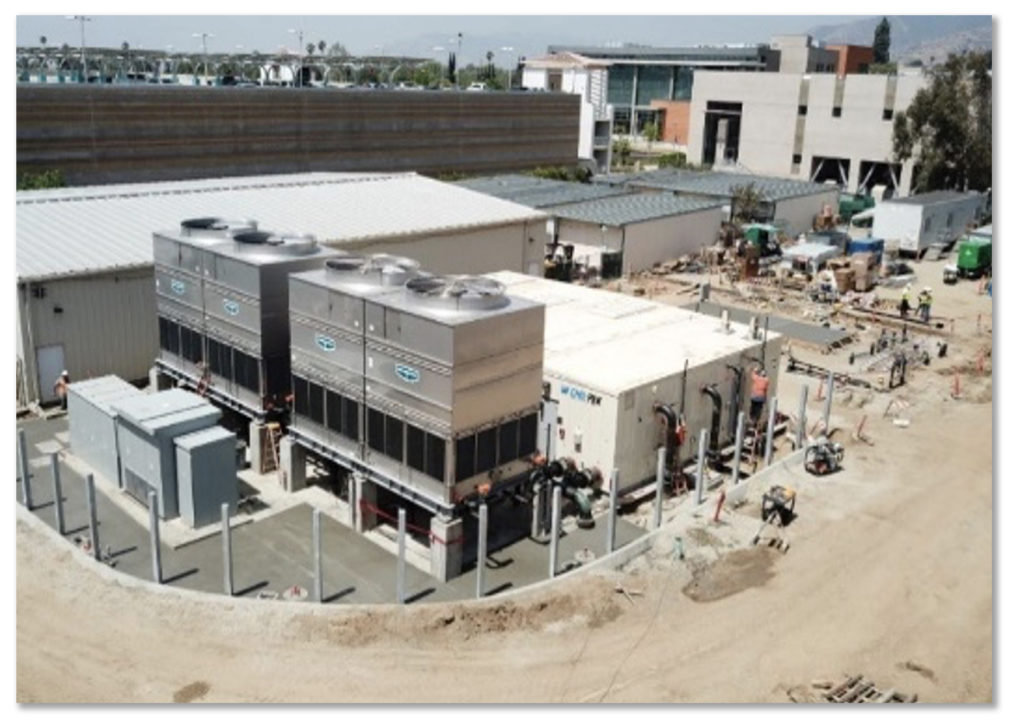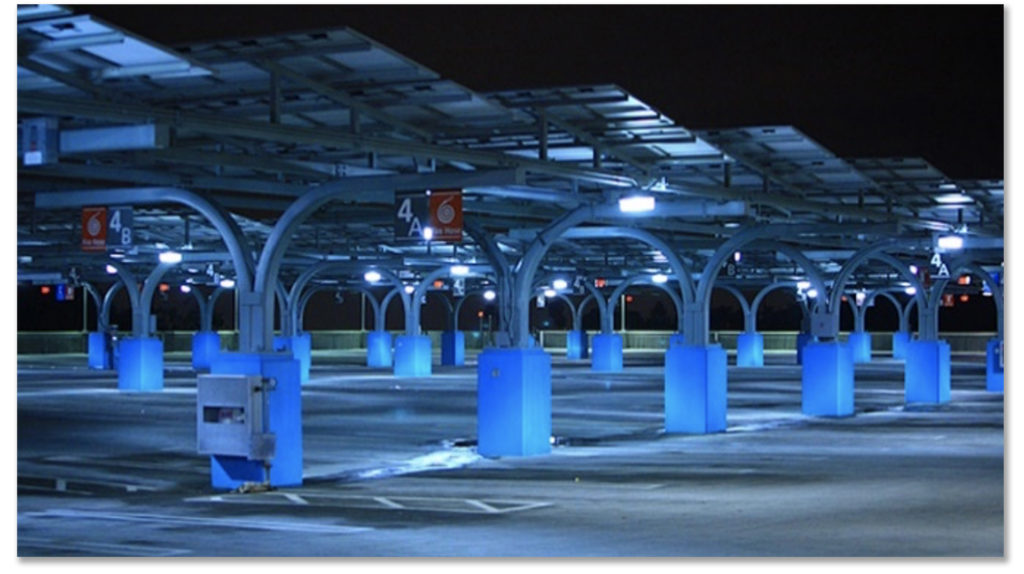College and university campuses are behemoths of energy consumption, with libraries and server rooms using electricity around the clock, large buildings blasting heat and cooling, sometimes to empty classrooms and offices, and students often oblivious of their energy use during late-night study sessions or the occasional all-nighter. As a result, educational institutions have the potential to be a threat to the grid during times of critically high demand as well as large contributors to the effects of climate change. However, many campuses are taking steps to reduce their energy consumption and environmental impact, while cutting costs and educating their communities about the benefits of energy efficiency. One such entity is the Los Angeles Community College District (the District, LACCD), where I serve as Vice Chancellor and Chief Facilities Executive.
We are the largest community college district in the U.S. comprising nine college campuses, two satellite education centers, the District headquarters in downtown Los Angeles, California, and various off-campus facilities housing support teams and non-academic programs. In all, LACCD is the steward of 12.5 million gross square feet of facilities, spread across 900 square miles, and serving more than 200,000 students from 36 incorporated cities and county communities.
With five of the District’s colleges residing in historically underserved, under-resourced, and disadvantaged frontline communities with the high levels of vulnerability to the causes and effects climate change, our leadership recognized the potential to reduce the colleges’ role in contributing to the acceleration of climate change in a significant way by managing our energy and utilities usage. In addition, measures taken to reduce LACCD’s carbon footprint are also measures that will contribute to substantially reducing costs, thus better managing the public dollar.
A long-time leader in environmental stewardship, the District adopted a resolution in 2002 to pursue LEED certification on all new construction projects. In addition, the District committed to ensuring those projects perform at least 20% better than code-mandated energy baselines and to obtain 15% of energy from renewable sources. To date, LACCD has invested in sustainability measures across dozens of projects and has earned LEED certification on more than 50 buildings.
The District’s Board of Trustees confirmed its commitment to invest in sustainable development and operations and to further solidify its role as a leader in sustainability by adopting a Clean Energy and Sustainability resolution. At the time, July 2020, this was the most aggressive resolution in the California community college system. The Clean Energy and Sustainability resolution calls for the complete elimination of carbon-based electricity consumption by 2030 and the complete elimination of all other carbon-based energy use by 2040. Further, the District included considerations for zero waste, carbon emission tracking, stormwater retention, and other measures to create a more comprehensive response to climate change.
Ultimately, however, the District needed to develop more efficient cost-saving measures, especially as enrollment dropped though the COVID-19 pandemic. This, as it turns out, was easier than originally imagined through the very measures that will keep LACCD at the forefront of the sustainability movement.
The Measure LA Bond Initiative
To accomplish these goals, I worked with District and college leaders, faculty, staff, and students to develop a robust and innovative strategy with funding support from the voters of Los Angeles. Out of this effort, we developed an Integrated Energy Resource Plan for the District and each of the nine colleges and successfully secured a voter approved bond measure.

Integrated energy resources are key to maximizing efficiency and return on investment.
In my role as LACCD’s chief facilities executive, I have the advantage of having a Board of Trustees and Chancellor who understand that we can invest in forward-thinking technologies to address climate change and still realize cost savings. Moreover, we have the support and trust of the Los Angeles voters who approved Measure LA in November 2022, the largest bond measure ever.
The voter-approved Measure LA will generate $5.3 billion to upgrade infrastructure including technology, and athletic fields and most important to implement the Smart Technologies strategy. Smart technologies include the Internet of Things (IoT), which are devices that have sensors, data processing ability, and other technologies that connect and exchange data with other IoT devices and systems over the Internet or other communications networks. Other technologies include artificial intelligence (AI) and Edge computing, which is an emerging computing model that refers to a range of networks and devices at or near the user. Edge is about processing data closer to where it is generated, enabling processing at greater speeds and volumes, leading to greater action-led results in real time. These smart technologies can use real-time data to help large campuses, or in our case, a multilocation district, to monitor and optimize energy and utilities use.
These technologies can enable automated control of lighting, heating, cooling, ventilation, and other systems based on occupancy, weather, time of day, and other factors. They can also provide feedback and incentives to users to encourage behavioral changes and energy conservation.
At the same time, the District is moving forward with other tactics in its overall strategy, including moving forward with phase one of its Electric Vehicle Charging Stations (EVCS) plan, which over time, will transform 25% of all parking stalls, approximately 6,500 total, to EVCS across all nine colleges. Recognizing that the demand for EVCS by the students, faculty, and staff will be on a more gradual timeline than that of the broader population, the District will reach its 25% goal in lockstep with demand.
Moreover, the District is prioritizing and investing in the decarbonization of all fossil fuel equipment at all colleges. By replacing all gas fire boilers with the electric equivalent, heating each college will be with 100% carbon-free produced energy. Energy Efficiency/Energy Conservation tactics also include LED retrofitting for all buildings on all campuses, enhancing indoor air quality, using plug control systems, and performing motor efficiency upgrades.

Change gas boilers for electronic equivalent at each college.
Many of the District’s colleges have buildings that were built before the 1970s that were not designed to be energy efficient, certainly not by today’s standards, or that have outdated equipment that is woefully inefficient. To address this issue, the District is making cost-effective investments to improve building performance, including retrofitting every building with low-energy LED lighting as well as improving insulation and upgrading heating and cooling equipment to further reduce energy waste, costs, and pollution.
The District is investing in developing on-site renewable energy microgrids to allow each college to power its entire campus, including athletic fields, event spaces. and even heating the swimming pools, with free clean renewable energy. In addition, the District is building resilience and continuity of service by installing battery electrical storage systems as well as reducing energy costs and creating zero carbon campuses.
Zero carbon energy will come from investing in solar photovoltaic (PV) systems. Ours is currently a 10,680.6-kw system that generates 15% of the electricity used Districtwide. The District’s Solar PV plan is to replace PV panels older than 10 years with high-efficiency PV panels where it makes sense, install new Solar PV systems where current systems are outdated technology and/or beyond repair, install solar thermal systems, and install microgrid systems at all nine colleges to produce and manage energy use as well as sell back excess energy to local utilities to strengthen the broader grid with clean energy.

Solar panels at Los Angeles Pierce College.
Recognizing that achieving energy efficiency isn’t just a technical issue but a social one as well, the District developed and launched a public information and education campaign to inform students, faculty, staff, visitors, and the broader community about the investment in sustainability the District is making at each college and encourage their support and participation. Specifically, the District will promote the use of a web-based portal and smartphone app to report facility issues through outreach events, social media posts, flyers/posters in every classroom, meeting spaces, and community spaces on campus as well as coordinating with each college newspaper.
Adopting Digital Twin Technology
The jewel in our technical crown, however, is the District’s plan to develop what may be the largest Digital Twin program undertaken to date. A Digital Twin creates a digital representation of a real asset and streams real-time data to generate dynamic solutions. Through the Digital Twin, the District will be able to collect, organize, and analyze real-time data that will lead to data-driven decisions and solutions.
“A digital twin technology is a future tool that is imperative we implement now in order to cover the entire life cycle of an asset and form the core through which connected products and services will communicate,” said Bharat Patel, project lead for BuildLACCD. “With digital twin, decisions at the District won’t just be informed, but propelled by the most cutting-edge, real-time data.”
Through the Digital Twin, the District will be able to monitor and manage energy usage and make immediate adjustments as needed for each of the nine colleges from a centralized location.
With Digital Twin, the District’s facilities don’t just operate, but thrive. The District will be ushering in a new era where real-time metrics will mesh seamlessly with asset condition and performance. This new technology won’t just analyze the present; it will predict the future, simulating scenarios that arm the facilities teams with unparalleled insights.
“It is all about making the smartest choices for the life cycle and driving down the total cost of ownership,” stated LACCD Board of Trustees President, David Vela. “It is not just about being better stewards of limited funds and efficiency, but the commitment to the 2030 elimination of all District’s carbon-based electricity consumption and elimination of ALL other carbon-based energy use by 2040 with clean, renewable and/or sustainable energy sources.”
Through the Digital Twin, the District will be able to monitor and manage energy usage and make immediate adjustments as needed for each of the nine colleges from a centralized location. In addition, this system will provide a web-based portal and a smartphone app that will allow students, faculty, and staff to submit an incident report directly into the system that will generate an immediate response thus improving response time and eliminating energy waste.
“As a public entity, we have a responsibility to manage the public dollar in a way that maximizes the overall benefits for the students we serve,” stated LACCD Chancellor Francisco C. Rodriguez. “By managing our energy and utilities more efficiently, we will meet our sustainability goals and have more funds to meet our students’ basic needs such as housing and other wrap-around services.”
LACCD is poised to pioneer new frontiers with its data-driven approach, setting a groundbreaking standard for higher education facilities management. With Digital Twin, the District will have optimized maintenance and operations, enhanced performance across the District’s asset portfolio, and realized cost savings while achieving their sustainability goals.
Rueben Smith is vice chancellor and chief facilities executive at Los Angeles Community College District, Los Angeles, CA. He can be reached at [email protected]. This is his first article for Facilities Manager. Many thanks to Anna Parra for her valuable assistance.



